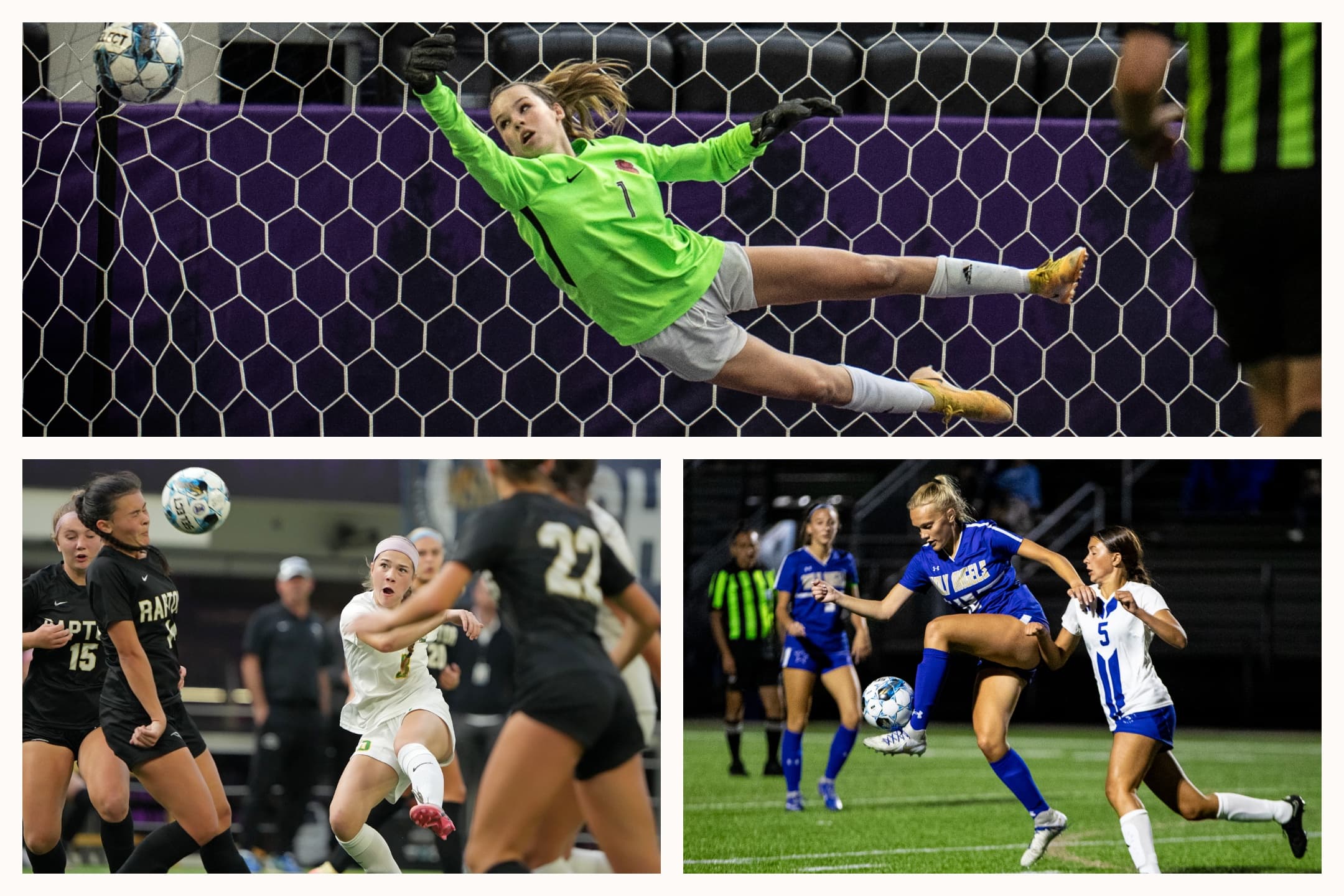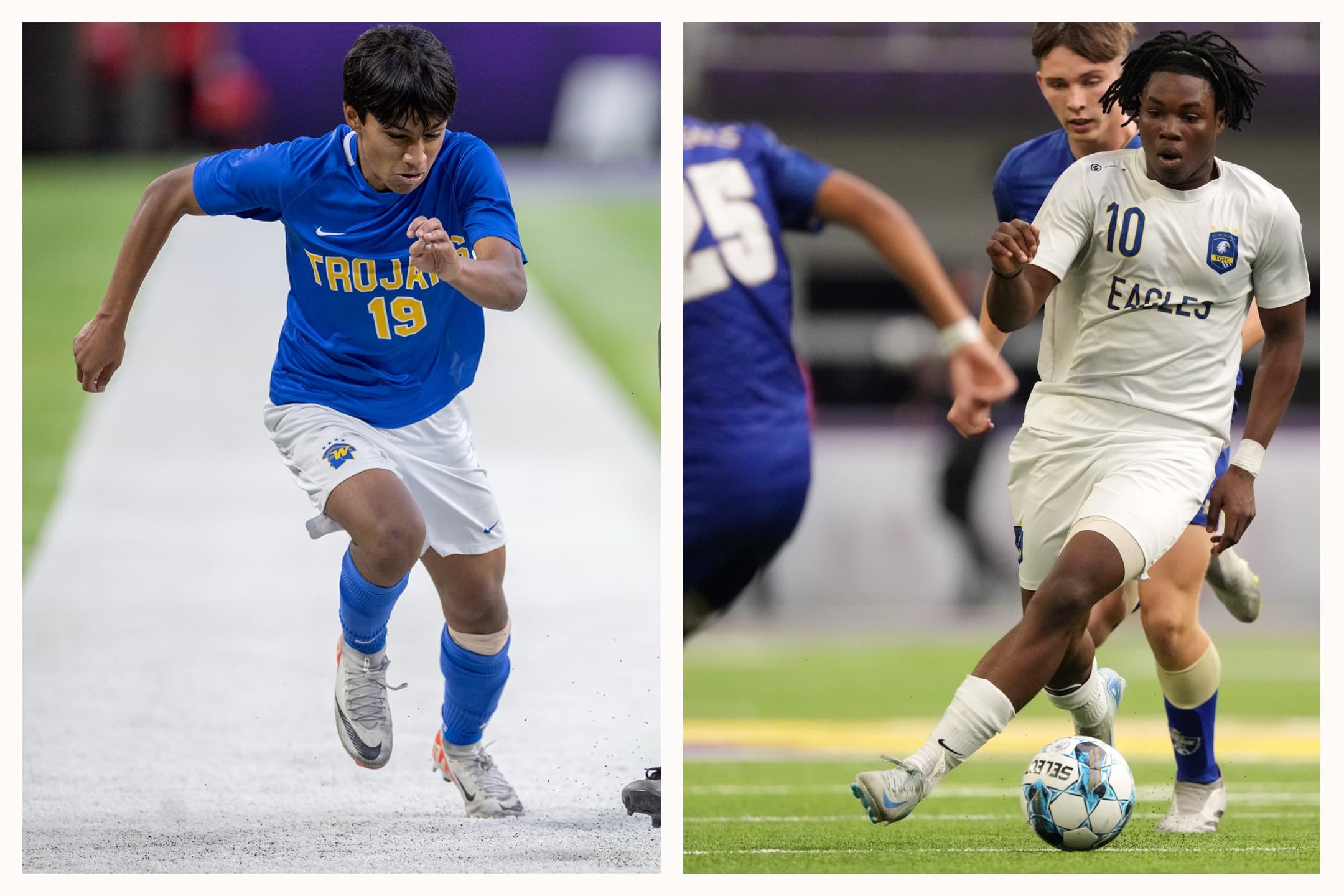A school and its neighborhood couldn’t agree on an artificial turf field. The solution produced a rarity.
Minnehaha Academy is the first high school in the state to put in a hybrid grass field, the same kind Minnesota United plays on.

The Minnesota Star Tribune
Minnehaha Academy found itself in a turf war over a turf field with its neighbors off West River Parkway.
Last year, the Minneapolis-based K-12 private school submitted its soccer field renovation proposals to the Minneapolis City Planning Commission. The proposals included updating the upper campus’ pitch from natural grass to artificial turf.
Minnehaha’s residential neighbors voiced concerns that included both increased usage of the field and potential chemical contamination from turf materials. The city’s denial of the request cited that synthetic turf’s tendency to overheat and raise surface temperatures clashed with the city’s environmental goals.
The debate over using artificial grass forced the school to consider alternatives. The eventual decision to go with a hybrid grass field puts Minnehaha Academy into a rare class: the first school in Minnesota, and one of the first in the U.S., to adopt this type of blended turf.
“To the average athletic director, it’s [artificial] turf or grass,” Minnehaha Academy athletic director Josh Thurow said. “That’s all we know here in Minnesota.”
The playing surface, stitched together in about 20 days, will be the same kind used at Minnesota United’s Allianz Field and the Green Bay Packers’ Lambeau Field.
Mike Huray, Minnehaha Academy’s chief financial officer, said the cost of installing the hybrid grass was comparable to what the school had budgeted for an artificial turf field; he gave a price range of $300,000 to $600,000 for the new pitch. An additional charge, according to the administration, comes in the recurring cost of grassy grounds upkeep.
What is hybrid grass?
GrassMaster, the company installing Minnehaha’s field, originated in 1989 and has since installed fields for soccer’s World Cup as well as at many pro facilities. Two GrassMaster machines were flown in from Brazil, their shipping container taking up a handful of spots in Minnehaha Academy’s parking lot in August.
The tank-like robots, with spools of synthetic thread inside, inched across the Redhawks’ field, weaving 3% synthetic fibers with 97% natural turf, strengthening the grass’ root zone.
“[The old grass] got super hard by the end of the year,” boys soccer head coach Sean Jensen said. Between that and the wear and tear of daily usage, “it was almost unplayable,” he said, and there were concerns about injuries and about the grass slowing play.
Related Coverage
The sales pitch, said Thurow, was that hybrid grass becomes waterlogged less easily — preventing rainouts, which derailed Minnehaha Academy’s homecoming soccer games last year — and would develop fewer dirt divots from use by soccer teams, leading to a smoother playing surface. (There’s no concern about football. Minnehaha Academy’s co-op football team plays at Blake’s Gordy Aamoth Jr. Memorial Stadium.)
“Lightning is the only thing that can keep us off our field,” Thurow said.
Combined with the cost of new bleachers, lights, scoreboard and press box, Huray estimated total renovation costs fell between $1.6 and $2 million.
The hang-up with turf
Upgrading Minnehaha’s soccer facility was initially derailed by a gas explosion in August 2017 that rocked the upper school’s campus. Eight years later, the plan was slowed by neighborhood and city concerns, which included both the makeup of turf material and the heat impact of turf contradicting the sustainability tenets of the city’s 2040 Comprehensive Plan.
“Heat is the most significant issue,” said Dr. Michael Barnes, who conducts research at the intersection of social science and turf grass at the University of Minnesota. “Synthetic turf gets hotter than asphalt and concrete.”
And though it provides a more consistent playing surface, artificial turf isn’t every soccer player’s favorite solution, either.
“A lot of times with turf, your cleat … gets too much traction, and then you’re more susceptible to ankle injuries and just other injuries that you wouldn’t be on grass,” Minnehaha senior midfielder Broder Nelson said.
Barnes called increasing temperatures the most “settled science” in terms of turf’s impact but acknowledged that the potential injuries and environmental impacts of turf are frequent areas of study.
But synthetic turf is often the most practical path for schools. According to the Minnesota State High School League, Wayzata in 2000 became the first high school in the state to add a turf field. In the following quarter-century, artificial turf has become a go-to option for schools looking to get more usage hours out of their field space, with less worry about rainouts or upkeep.
The hybrid surface at Minnehaha Academy, approved last November, “is going to end up being the best-case scenario,” Thurow said. “We turned those lemons into lemonade, for sure.”
Looking ahead
When the Redhawks take the field this fall, the boys and girls soccer teams will be just the first group of future tenants, Minnehaha administrators envision.
Part of getting the commission to approve new light fixtures and field renovations was providing estimates for how often the soccer teams — and, in the spring, the boys lacrosse team — would use the field and keep the new floodlights on past sundown.
The proposal acknowledged that in the future the field could be rented to soccer clubs within the hours of 9 a.m. to 9 p.m.
In 2031, when the Women’s World Cup comes to the United States, “if Minneapolis gets to be a host site, we will be a practice facility for them,” Thurow said, acknowledging that possibility is still a ways off.
Barnes said hybrid grass playing surfaces are “being more and more talked about,” with “ongoing research” into their long-term durability and total life-cycle costs, from installation to eventual replacement. The question, said Barnes, is hopeful: “Does it provide the best of both worlds?”
The Minnehaha girls soccer team is a two-time Class 1A state champ, most recently in 2021. The boys team, ranked No. 3 in Class 1A, is looking to return to state for the first time since 1991. They’ve been halted in the Section 3 championship the past three seasons, losing close games to back-to-back-to-back state champion St. Paul Academy.
“We’re going to give them the athletic surface that, you know, only a few will get,” Thurow said. “It makes us a standout, a little.”
About the Author
Cassidy Hettesheimer
Sports reporter
Cassidy Hettesheimer is a high school sports reporter at the Minnesota Star Tribune.
See More


Comments